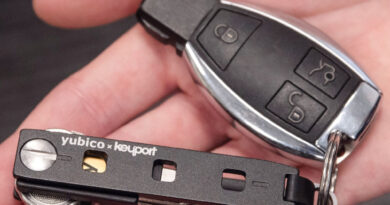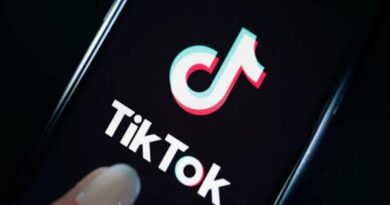Why UX/UI Design is the Backbone of Modern Tech Products
When was the last time you felt completely frustrated by a product interface? Maybe navigating an app seemed impossible, or a piece of tech wasn’t intuitive enough to use. Experiences like these highlight the critical role user experience (UX) and user interface (UI) design play in how we perceive tech products.
Whether you’re an entrepreneur launching the next big app, a tech startup building groundbreaking software, or a design professional working on cutting-edge hardware, UX/UI should sit at the heart of your development strategy. Why? The exceptional design doesn’t just enhance how users interact with your product—it can determine whether they stick around or hit the uninstall button.
This post dives into why principles of ui ux design matters, shares actionable principles for success, and explores real-world examples of great design in action.
Why UX/UI Design Matters for Modern Tech Products
A well-designed product is more than a sleek interface or eye-catching visuals—it’s about creating a seamless and satisfying experience for the user.
For tech products, whether they’re software applications, hardware devices, or AI-powered solutions, design goes hand in hand with functionality. Here’s why UX/UI design should never be an afterthought for tech businesses:
- First Impressions Are Critical
Users form opinions within seconds of engaging with a product. A cluttered interface or broken user flow can drive customers away before they even explore its features.
- Enhances Usability
Smooth navigation and intuitive design reduce friction, making it easier for users to achieve their goals. When users can interact effortlessly with software or hardware, they’re more likely to stay loyal to the brand.
- Boosts Product Adoption
Complicated systems hinder engagement. Alternatively, a well-thought-out design helps first-time users feel confident, speeding up adoption—and by extension—revenue.
- Builds Brand Trust
Exceptional UX/UI communicates professionalism and care, which fosters trust. When customers feel like a product understands their needs, they’re more likely to recommend it to others.
Takeaway? UX/UI isn’t just about looking good. It’s about building a relationship between users and your product.
Key Principles of UX/UI Design for Seamless Experiences
Want to deliver unparalleled user experiences? Keep these principles in mind throughout your design process.
1. Think User-Centric
Every design decision should account for how the user interacts with the product. What is their goal? What roadblocks might they face? It’s not about what’s flashy—it’s about what’s functional.
Pro Tip: Test early and often. Tools like heatmaps and user session recordings can show how users engage with your product and highlight areas for improvement.
2. Consistency is King
Consistency in layout, colors, typography, and interaction patterns ensures users don’t feel disoriented when navigating your product. Familiarity enhances usability.
3. Keep It Simple
Complexity is the enemy of usability. Avoid overwhelming users with too many options or redundant features. Instead, maintain a clean interface and clear calls to action.
4. Intuitive Navigation
Users should always know where they are and how to get where they want to be. Clear menu structures, visual hierarchies, and cues (like breadcrumbs or hover states) can make navigation a breeze.
5. Design for Accessibility
Your product should be inclusive of all users, including those with disabilities. Follow accessibility design standards (like WCAG) to ensure usability for all.
Case Study: How Intuitive UX/UI Drives Product Adoption
A great example of the power of intuitive design is Dropbox, a pioneer in cloud storage solutions.
Challenge
When Dropbox first launched, cloud storage was a relatively new concept, and the company needed to convince users that their files wouldn’t just vanish into thin air.
Solution
Instead of overloading users with technical jargon, Dropbox leveraged a simple, guided onboarding process. Through minimalistic design and easy-to-follow animations, first-time users could upload, organize, and retrieve files without ever feeling lost.
Result
The combination of a frictionless UI and a stellar UX helped Dropbox scale rapidly—you probably even used it to share a file just last week!
Lesson learned? When design lowers the learning curve, adoption skyrockets.
Overcoming UX/UI Challenges in AI & IoT Devices
While traditional software and hardware present their design hurdles, the rise of AI-powered and IoT devices introduces unique challenges for UX/UI designers.
- Making AI Feel Human
AI-based tools like smart assistants need interfaces that align with human behaviors. Poorly executed AI UX/UI can make interactions feel impersonal or even creepy.
- Complex Systems, Simple Interfaces
IoT devices often have intricate internal systems, yet their user-facing controls must remain intuitive. For instance, users don’t want to fiddle with a 20-step configuration process just to connect their smart thermostat.
- Error Management
AI systems aren’t perfect. Designers must account for potential errors and provide users with understandable feedback (no cryptic “Error 503” messages!).
- Privacy Considerations
With AI and IoT, data privacy is a big concern. Clear, transparent UI is crucial to building trust and ensuring users feel safe sharing information through connected devices.
How Avantari Revolutionizes User-Friendly Product Design
If you’re looking for cutting-edge UX/UI solutions tailored for tech products, Avantari is one of the leading names in the industry.
With a reputation for creating user-first designs, Avantari serves as a top UI/UX design agency in India and collaborates with various AI tools for hardware design to craft seamless systems for both hardware and software ecosystems.
Their team combines rigorous user research with intuitive design strategies to ensure every product—whether it’s a SaaS application, IoT device, or AI platform—feels effortless to use.
UX/UI Design Is the Key to Tech Innovation
Great products start with great design. Whether it’s simplifying a software’s interface, transforming how users interact with AI, or optimizing complex IoT systems, UX/UI design is what bridges the gap between usability and innovation.
Entrepreneurs, startups, and tech professionals cannot afford to overlook the impact of design on their product’s success. If you want your tech to stand out in a competitive market, it’s time to prioritize UX/UI.
Want expert help crafting user-friendly designs for your tech product? Avantari’s experienced design team is ready to bring your vision to life. Contact us today to learn more!



